MXA INTERVIEW: THE NINE LIVES OF “ROKON” DON KUDALSKI
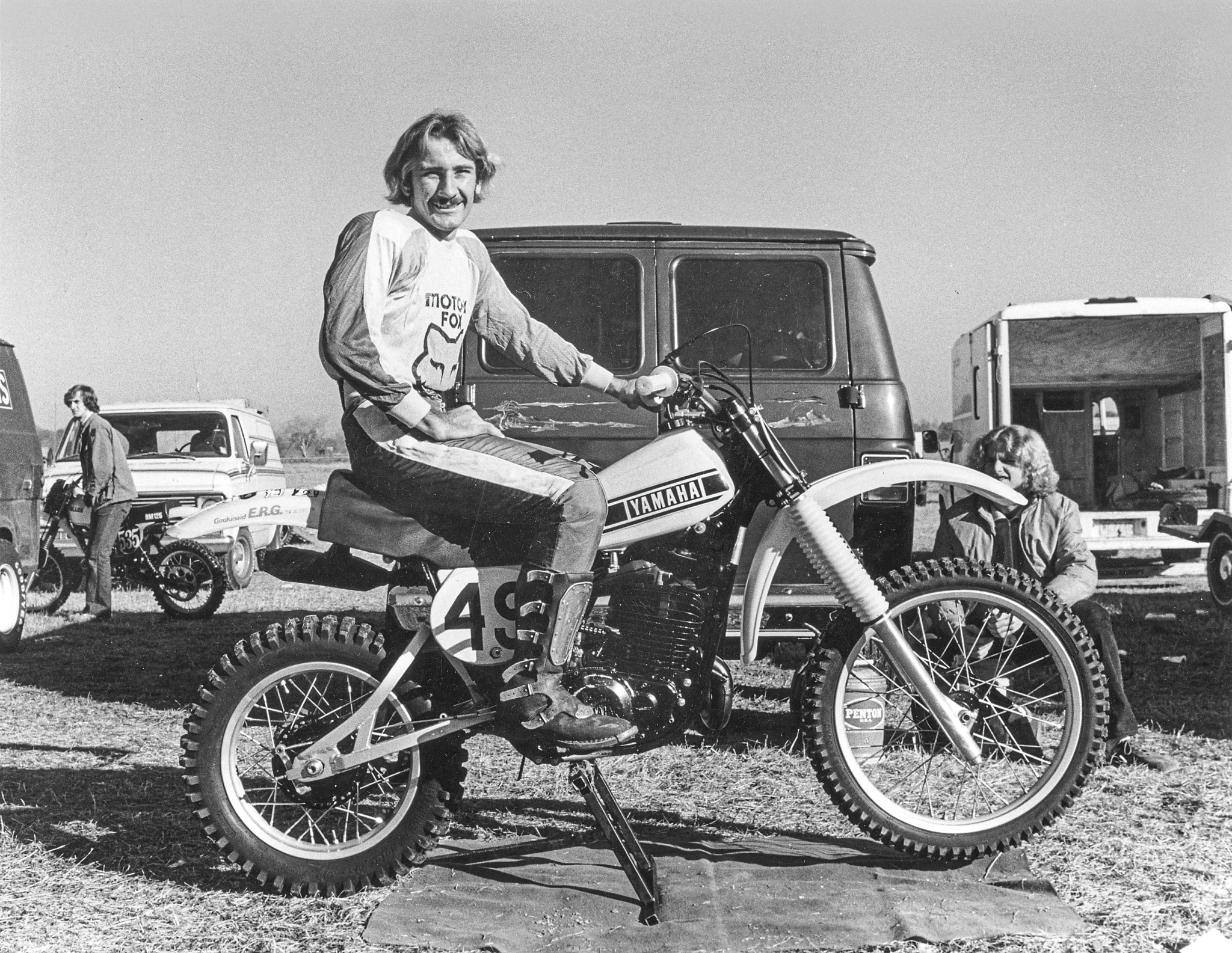
BY JIM KIMBALL
Photos by Jim Gianatsis/FastDates.com
WERE YOU AWARE OF MOTOCROSS BEFORE YOU STARTED RIDING? I knew nothing about motocross. I just started riding around the neighborhood, but naturally, you find other guys who ride also. My dad owned a tile installation business, and it was always tough to keep help. One employee had a Suzuki 90 with a kit on it, and he raced motocross. He asked me, “Why don’t you come out and watch me race?” So, we went, and it was dusty, hot and dirty. We watched 40 riders on the starting line going into the first corner. We thought they were nuts.
WHEN DID YOU ENTER YOUR FIRST MOTOCROSS RACE? My parents wanted me to wait until I was 15, which was in September of 1972. I got a Suzuki TM250 motocross bike and built a small track on our property. My dad had dirt delivered so I could make jumps. I would ride almost every day. My first race was in the 250 Novice class. I got second place. I race the Novice class for three months, and when the 1973 Florida Winter AMA series came around, I moved to the 250 amateur and I won it overall.
THE FLORIDA WINTER AMA SERIES WAS HUGE IN THE 1970s. California did not have anything at that time of the year, so Florida was it because of the weather. That was the happening place in January and February. Plus, Daytona was in March. Every AMA Pro would use the Winter AMA series as a tune-up for the Daytona Supercross. I had ridden most of those tracks, as I lived in South Florida. I started to see the guys like Brad Lackey, Jimmy Weinert, Barry Higgins and Roger DeCoster. I began buying Motocross Action and had the magazine pictures up in my room. That is when I got exposed to the famous guys.
“MY DAD DID NOT LIKE HOTELS, SO WE WOULD SLEEP AT THE TRACK IN THE VAN. A LOT OF CRAZINESS GOES ON AT THE RACES THE NIGHT BEFORE A BIG RACE. WE WERE TRYING TO SLEEP IN THE VAN, AND THEY WERE PARTYING ALL NIGHT.”
WHAT PROMPTED YOU TO TURN PRO? After winning lots amateur classes, the AMA said, “You must turn pro,” so I did. That summer, Bultaco called an asked, “Why don’t you come up to the 250 National in West Virginia.” My dad did not like hotels, so we would sleep at the track in the van. A lot of craziness goes on at the races the night before a big race. We were trying to sleep in the van, and they were partying all night.
I was on a stock 250 Bultaco Pursang, and I got the holeshot both motos, but my dad said I was riding with my head on a swivel looking at the guys behind me, like Pierre Karsmakers, Tommy Croft and Billy Grossi. He asked, “What are you doing?”
I said, “Well, these are the guys that I look up to.”
He said, “But you were ahead of them.” I finished 11th overall in my first 250 National.
DID THAT HELP YOU GET MORE SUPPORT FROM BULTACO? No, they pretty much reneged on everything they said. They even wanted me to buy one of their jerseys to wear when I raced. I said, “Really, you can’t sponsor me with a jersey?”
ROKON HAS TO BE AN INTERESTING STORY. The shop I raced for, Boca Honda, got a hold of the Rokons that Bob Harris was racing, as he didn’t want to ride them anymore. I was at a race in Ocala, and they said, “Do you want to try this thing?”
I said, “All right.” I went out in the first Open Expert moto and won on that Rokon! Everybody’s mouths were wide open.
THAT HAD TO BE A HUGE DEAL. The guys from the Rokon factory in New Hampshire were there and on the starting line for the second moto; it wouldn’t start. Those guys were pulling and pulling on that cord. So, I did not get to ride the second moto. But, they asked if I wanted to continue racing it. I said, “Okay, I’ll give it a shot.” I don’t know why, but I always liked fighting adversity.
When somebody said, “You can’t do it,” I would reply, “Give it to me. I will do it.”
AND JUST LIKE THAT YOU WERE RACING THE ROKON. That Rokon 340 Cobra with the lay-down shocks was great in the sand and mud. In fact, we went to a big race in San Antonio. Wyman Priddy and Barry Higgins were there. It rained all night, and the next day it was a mudder. That Rokon was heavy and had a nice, smooth powerband. I was squaring off corners and passed Higgins on a downhill. He could not believe it!
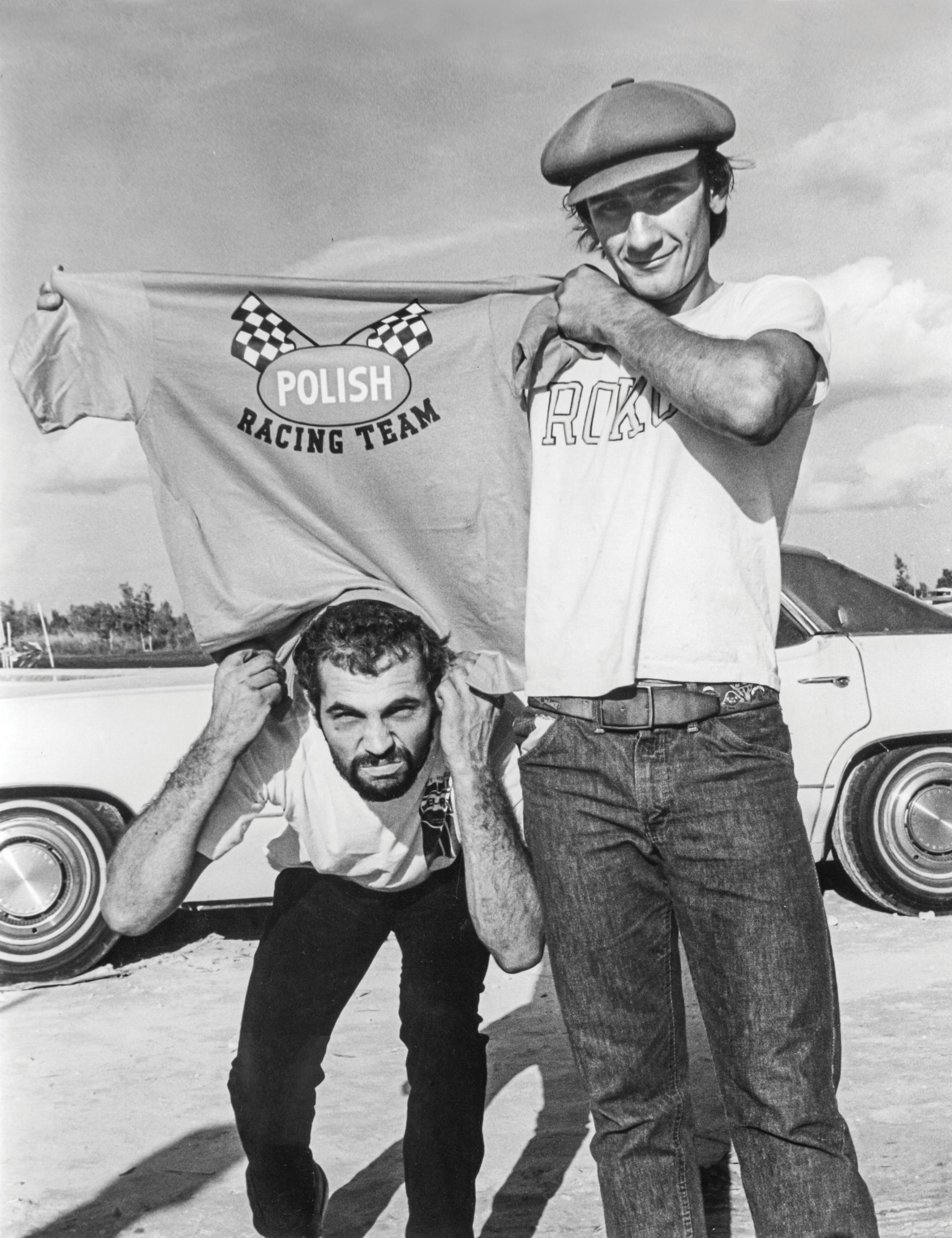
IN 1975 YOU WERE ROKON’S FACTORY RIDER, RIGHT? Yes, I battled the entire 1975 Florida Winter AMA Series with Tony DiStefano, Billy Grossi and Mike Hartwig. At St. Petersburg, I won the overall in the Open Pro class and finished second overall in the series to DiStefano. I should have won that series. At the Ocala round I was winning a moto and crashed in a corner. Right after that corner was a small jump, and the AMA officials said that I went around it, not over it. Tony D’s teammate, Billy Grossi, saw it, and they protested me. They docked me a lap for that. Instead of winning or getting second that day, I only finished top 10. Of course, that really hurt my points. I finished second overall to DiStefano.
ROKON MUST HAVE BEEN HAPPY; DID THEY START PUTTING EFFORT INTO THE 340 COBRA? No, I don’t think it would have mattered anyway, because let’s face it, the bike used a snowmobile engine and an automatic torque converter transmission. Rokon specialized in quirky off-road bikes like the Trailbreaker. Although they built the 340 Cobra as a motocross bike, I don’t know if they really had any intentions of ever racing motocross seriously. Rokon gave me bikes, parts and gas money—that was about it.
BUT YOU RACED THE ROKON AT THE DAYTONA SUPERCROSS. Let me tell you about racing the Daytona Supercross on a Rokon. In the first moto, I was running in the top five. Back in those days, the Supercross track crossed over the asphalt pit road.
In the first two motos I broke my chain coming across the asphalt. For the third moto, the engineers put on a heavy-duty chain. They said, “You are not going to break the chain this time.” After a couple of laps, I broke the transfer case. That made the front pulley come off the engine. I had to push it back to the pits, and you should have seen those engineers scratching their heads. They said, “Nobody has ever broken one of those.” I was hard on bikes, especially in the sand. I rode hard.
“I SAID, ‘JIMMY, THAT NUMBER IS FROM LAST YEAR; YOU GOT TO EARN IT THIS YEAR.’ HE SAID, ‘OH, YOU ARE A KILLER.’ THAT NICKNAME STUCK.”
BUT YOU CONTINUED TO RACE SUPERCROSS ON THE ROKON. AND GOT THE NICKNAME “ROKON” DON KUDALSKI? Yes, the next race was the Houston Astrodome, and what an experience. The Rokon was great in the sand and mud, but this was hardpack. The first moto I was in fifth, and I could see the number-one plate of Jimmy Weinert’s Kawasaki coming up on me. Finally, he caught me coming into a tight 180-degree corner. He tried to stuff me. The Rokon weighed 240 pounds and I was 160. In total, the Rokon and I weighed 400 pounds. He wasn’t going to move me. I held my ground and heard him crash. He got up, and a few minutes later, he finally passed me.
IS THAT WHEN YOUR NICKNAME CHANGED TO “KILLER” KUDALSKI? Yes, after the race, Jimmy Weinert came stomping over to our pits and yelled, “Don, when you see that number-one plate coming, you are supposed to let me go by.”
I said, “Jimmy, that number is from last year; you got to earn it this year.”
He said, “Oh, you are a killer.” That nickname stuck.
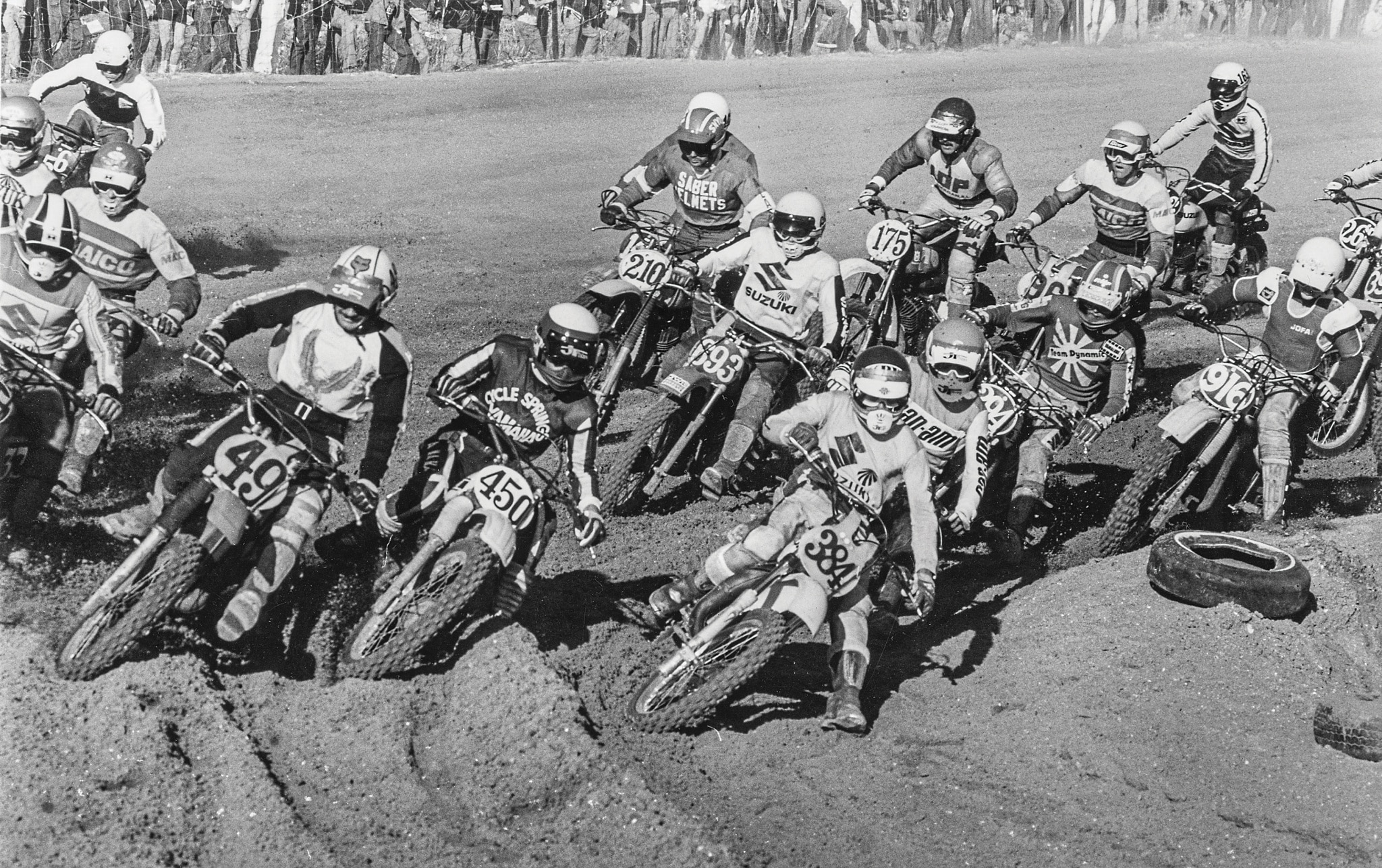
YOU GOT A LOT OF EXPOSURE AND TWO NICKNAMES BY RACING A ROKON. Rokon made everybody stop and take notice. None of them understood how I could ride that bike. I guess I was just so full of adrenaline that I muscled it around. I rode the Rokon most of that season in the 500cc Open class, and I was doing pretty well, but in the middle of the Nationals, they protested the bike.
WHY DID THEY PROTEST THE ROKON? They found out that the AMA rulebook states that an Open-class bike had to have a minimum displacement of 349cc. The Rokon was 340cc. The bike was 9cc under the required displacement. I finished that National in Omaha and drove straight to the factory in Keene, New Hampshire, because Rokon said they were going to bore out the cylinder, but when I got there, they decided to stroke it instead of boring it. Well, the bike never had the power that it had before. It was okay, but it just wasn’t like it was before.
THAT HAD TO BE FRUSTRATING. It was disappointing. I raced that Rokon for a little while longer, but Rokon decided that it wasn’t worth it anymore. They sold all the 340 Cobras to one guy.
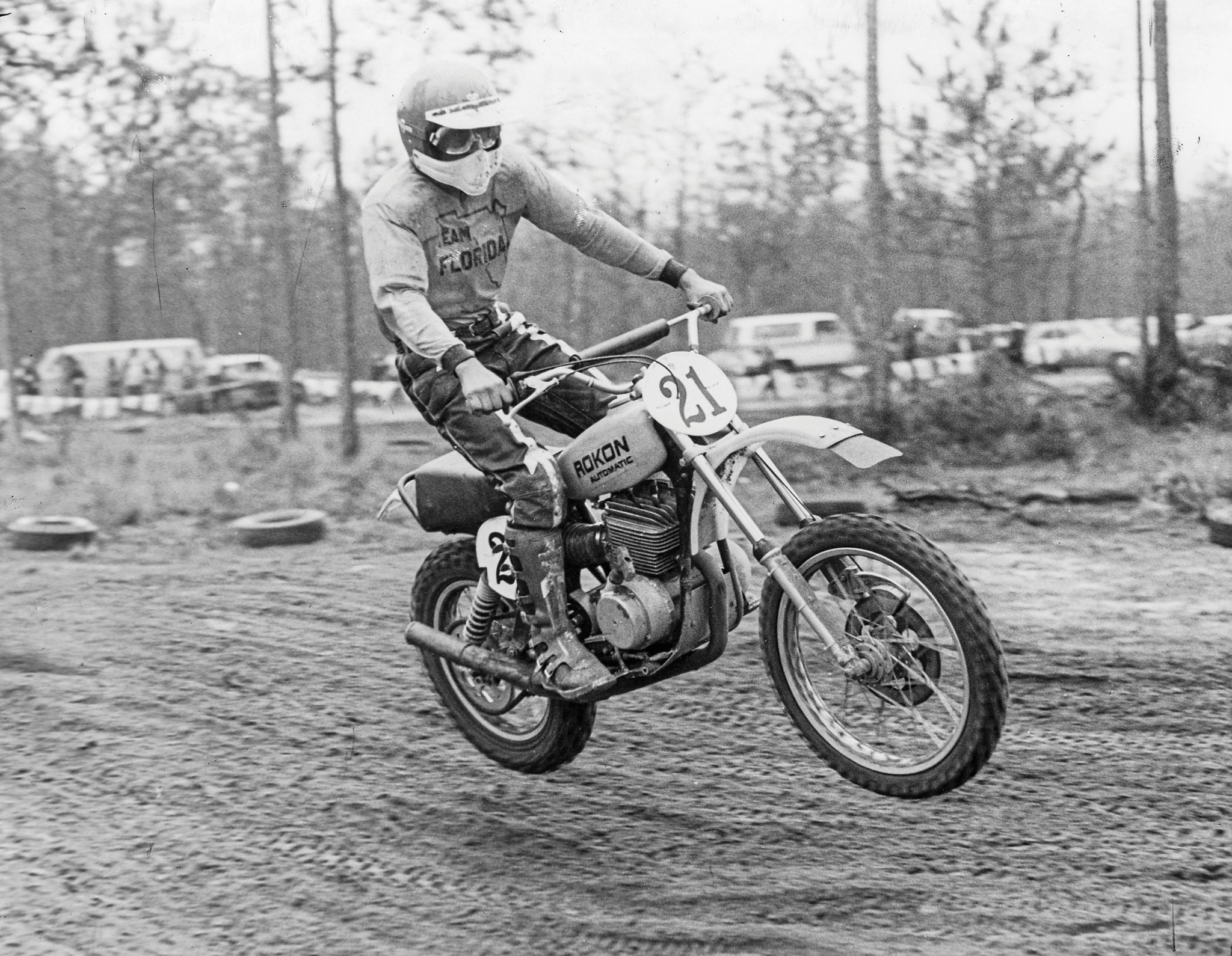
IS THAT WHEN HONDA STEPPED IN? Yes, Marty Smith had befriended me, and he talked to me at the end of the 1974 season at the Orlando Trans-AMA race. I was on a Maico 250 racing against the Hondas of Marty and Tommy Croft. Honda said, “Come out to the L.A. Coliseum for the Superbowl of Motocross.”
I did not race, but we went out early in the week, I called Marty, who said, “Come on down to my house and we will go riding.” I had just driven 57 hours straight to get to L.A. But, I went down to Marty’s house in San Diego, and he loaded up two CR125s, which I had never ridden before.
DID HONDA SIGN YOU? Yes and no. They gave me a Honda support ride. I raced a stock CR250 Elsinore in the support class. I did not have much success but did okay. When 1976 rolled around, I was hyped for the Florida winter AMA series. I was on a stock 250 Elsinore, but I rode it so hard that I would always break the bike. When the Winter AMA series ended, I was scheduled to race a stock CR250 at Daytona in March. I show up at the track, and Honda team manager Dennis Blanton and Marty’s mechanic Dave Arnold pulled me aside and said, “Marty’s not feeling that well, would you like to ride his works RC250 today?”
SO, YOU GOT TO RACE THE FACTORY BIKE? Honda really wanted to win that race. In hindsight, I don’t think Marty was sick. I believe they thought I had a good shot of winning that race on a factory bike. I believe Marty stepped aside and made it possible for me to get that factory bike that day. I was so amped up that I got the holeshot the first moto. In fact, that photo is what is on my plaque from “Legend to Heroes.” I had two or three bike lengths in the first turn and was gone.
TELL US MORE. I was leading the first moto, flat tracking that factory Honda around a muddy turn, when, suddenly, the rear wheel hooked up and looped me over backwards. Now, the rear fender is sticking up and I am embarrassed. I finished fifth in the first moto. The second moto I got the holeshot again, but the first-moto crash took the wind out of my sails. I finished top 10 in the first two motos. The third moto I had a first-corner crash and was dead last. I finished third at the end of the moto. I finished seventh overall for the day, and I thought I was on my way to a factory bike.
WHAT RACE WAS NEXT? The Astrodome was next, and I did pretty well. Basically, I got last year’s works bike for that year. I did good at the Astrodome and then we went to the Texas Stadium—the one with the hole in the roof.
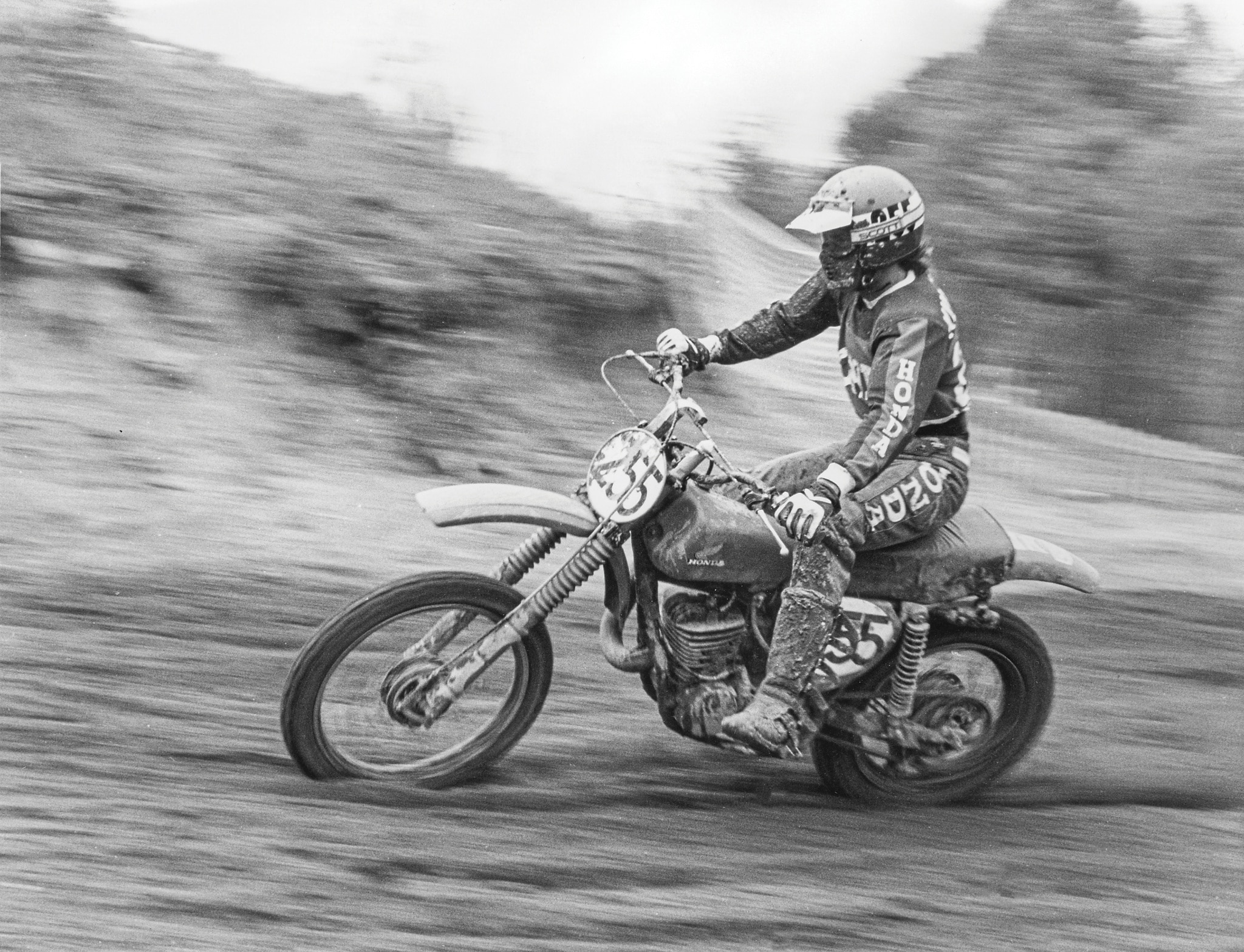
WHAT HAPPENED THERE? I was dicing with Bob Hannah in the top five, and I went to pass him. I knew I was faster. But, with the Honda I was on, they would send the rear shocks back every week to get rebuilt and send them back. Unfortunately, my pair did not come back, and I had the old air shocks on. Going over a jump, I took a different line and hit a kicker, the bike bounced and hit me in the back, and I fractured my pelvis.
Because of that, I missed the Hangtown 250 National. Honda said I should take time to heal up, and since the 125 Nationals started later in the year I should race that class, so they sent me a couple of 125s and said, “Get ready for the 125 Nationals.”
HOW WAS THE 125? They were beautiful bikes, but I could not make the first 125 National in California. My first 125 race was Midland, Michigan. When I got to Midland, honest to God, the track looked like Deerfield Beach, Florida, with grass, sand and pine trees.
In the first moto I was running fourth with guys like Marty Smith, and Bob Hannah, but got arm pump. I still finished fourth that first moto.
In the second moto, I got another good start, and Hannah and I were out front. I am following Hannah and I said to myself, “You can get around him.” There was a big jump, and he was letting off some. So, I thought, “I’ll just pin it.” I passed him in the air. I held that throttle wide open and ended up winning that second moto. That is the only AMA National moto I ever won, and the best I ever did in any National. I was second overall for the day. No one thought that Hannah could be beaten on his water-cooled Yamaha, but I did it on my stock Honda CR125. I was feeling pretty good.
I WOULD IMAGINE HONDA WAS ECSTATIC. They were, but unfortunately, the team manager, Dennis Blanton, had left the team. They hired a new guy who was not the same personable guy that Dennis was. After I won that second moto at Midland I was on a high. I had just won a moto over all these guys that I saw in the magazines.
HOW WAS THE NEXT NATIONAL? The next race was a 125 National at Budd’s Creek, Maryland. I set the fastest lap time in practice. I was just so amped up, and Marty pulled me aside and said, “Don, don’t win practice. Save it for the motos.”
I got fourth the first moto, and in the second moto I had a big crash. I got a bad start and tried to pass a bunch of people around this fast, high-speed corner, got out in the marbles, and twisted my ankle. Two weeks after that was the Mid-Ohio 125 USGP, and I could barely walk. I had the ninth-fastest lap time out of everybody, so that was my number for that day. Marty won that race. He loved that track and was on the factory RC125. Being injured, after about 15 minutes I was just gassed.
That fall Honda said, “If you want to race the Trans-AMA series, you are going to be in the Support class on a stock CR250 again.” I remembered that Larry Maiers had told me after the Midlands race that if I ever had any troubles with Honda to call him and he would give me a Penton ride. I called, and they hooked me up with a 250 Penton with laid-down Fox shocks. I did a few Trans-AMAs on the 250 before my dad talked me into switching to the big-bike class to make more money. I got a Penton 400 and had some top 10s.
HOW WAS THE PENTON? The 250 was a little underpowered, but the Penton 400 was wonderful. After the 1976 Trans-AMA series was over, I started the 1977 Florida Winter AMA on a Penton 400 and did pretty well. But, I did not put enough wins together, and after Daytona, Penton took the bikes back.
IS THAT WHEN YOU JUMPED TO CAN-AM? Yes, I knew Jimmy Ellis and his dad. They said, “We will hook you up with a couple of bikes.” The Can-Am was good in the stadiums, especially on tighter tracks, but I could never get a handle on the Can-Am on a big outdoor track. The wheelbase was just too short for me. But, that stock Can-Am MX-3 Black Widow was fast.
HOW LONG WERE YOU ON CAN-AM? Just six months. I had knee surgery on my left knee that summer. They took all the cartilage out, so it was bone on bone. He said I would be lucky to ever run again.
“I WON THE 1978 FLORIDA WINTER SERIES IN THE OPEN CLASS, AND HARLEY-DAVIDSON TOOK NOTICE AND GOT A HOLD OF ME. IT WAS NEAR THE END OF THE FLORIDA SERIES, AND THEY SAID, ‘WILL YOU RIDE OUR BIKE?’”
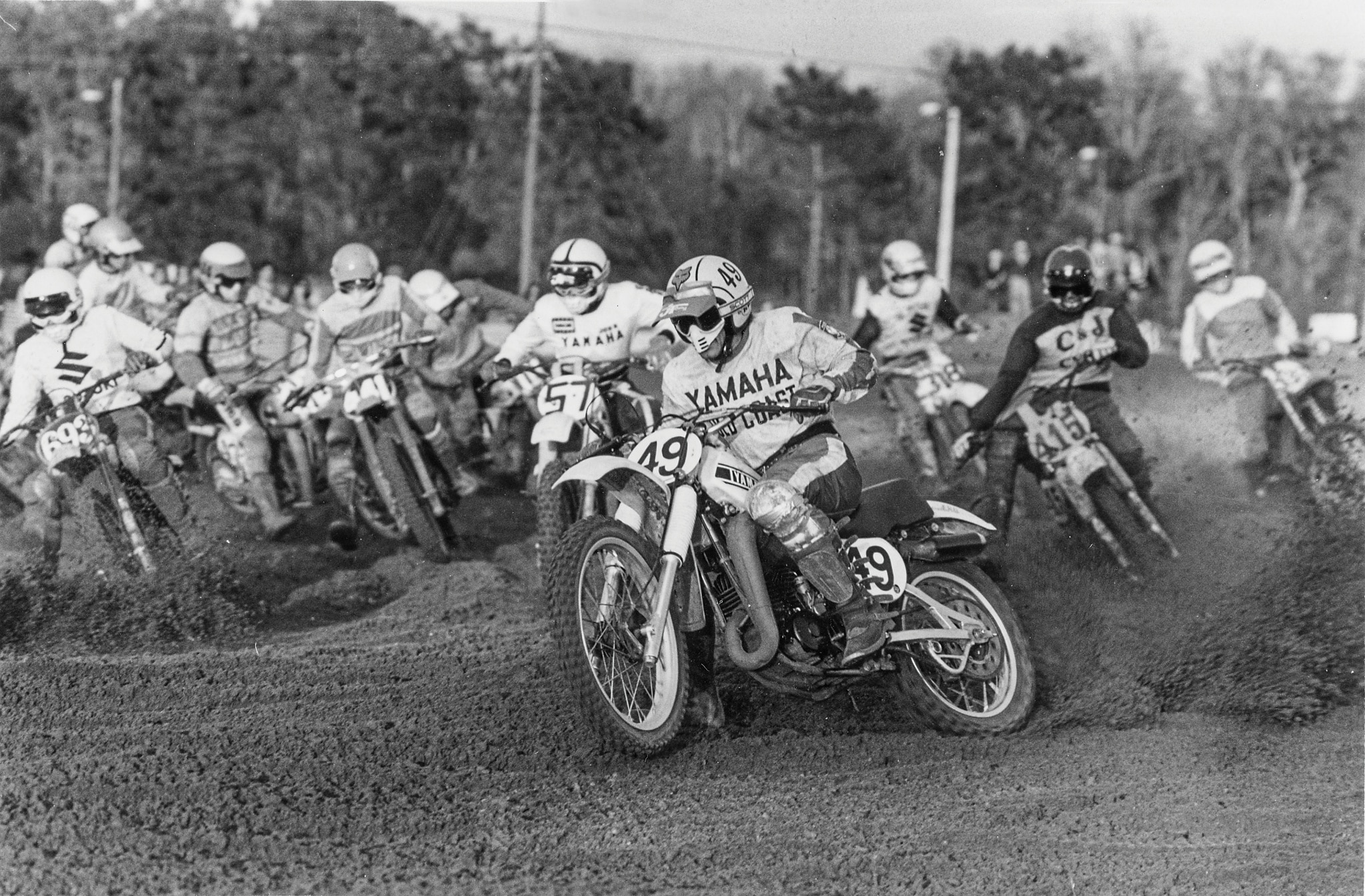
BUT YOU DID RETURN TO MOTOCROSS. After that surgery I dedicated myself and trained harder than ever. I got on a 1979 Yamaha YZ400 and raced a bunch of races in Texas, and started winning on that Yamaha. Then, the 1978, Florida Winter AMA series came around and I got a Yamaha support ride for the Open class.
I won the 1978 Florida Winter Series in the Open class, and Harley-Davidson took notice and got a hold of me. It was near the end of the Florida series, and they said, “Will you ride our bike?”
I said, “Well, let me race it, but I am not going to stop riding the YZ400 because I am winning the Open class, and with only two races left I want to win the overall.”
They said, “No problem.”
So, I was racing the Open class on the YZ400 and Harley-Davidson MX250 in the 250 Pro Class and won both classes. Nobody had done that. I decided to sign with Harley and the last race was in St. Pete. I made history that day, as that is the only major AMA race Harley-Davidson ever won. Rex Staten and Marty Tripes would win motos, but then something would happen or they would crash. It just happened that everything worked out that day.
HOW WAS IT BEING A FACTORY HARLEY-DAVIDSON RIDER? Harley was the only company that ever offered me a salary. I had a full factory ride on the Harley for 1978. I got expense money and a salary, and I flew to the races. The Harley MX250 was a good bike, but it was a step backwards because it still had twin shocks.
YOU FINALLY GOT THE FACTORY RIDE. HOW DID IT GO? At St. Pete, Bob Hannah and I were banging bars down a rough straightaway, and suddenly the Harley started to swap. I had no other choice, I had to wheelie it into the lake. That was embarrassing.
The flagger helped me get my bike out of the water, and my mechanic, Tom Volin, turned the bike upside down and got the water out of it for the second moto.
At Daytona I had a mechanical. At the Astrodome the Harley threw me off and dislocated my collarbone. I was discouraged, and I lost my confidence. Then, out of nowhere, Harley-Davidson said, “That’s it, we quit!” Harley sold the factory in Italy that made the engines and got out of motocross racing. They flew us to Milwaukee and paid me the rest of my salary. Bultaco offered me a support ride after the Trans-AMA. I rode the bike but returned it. It was obsolete in 1978, but I was happy to get an offer.
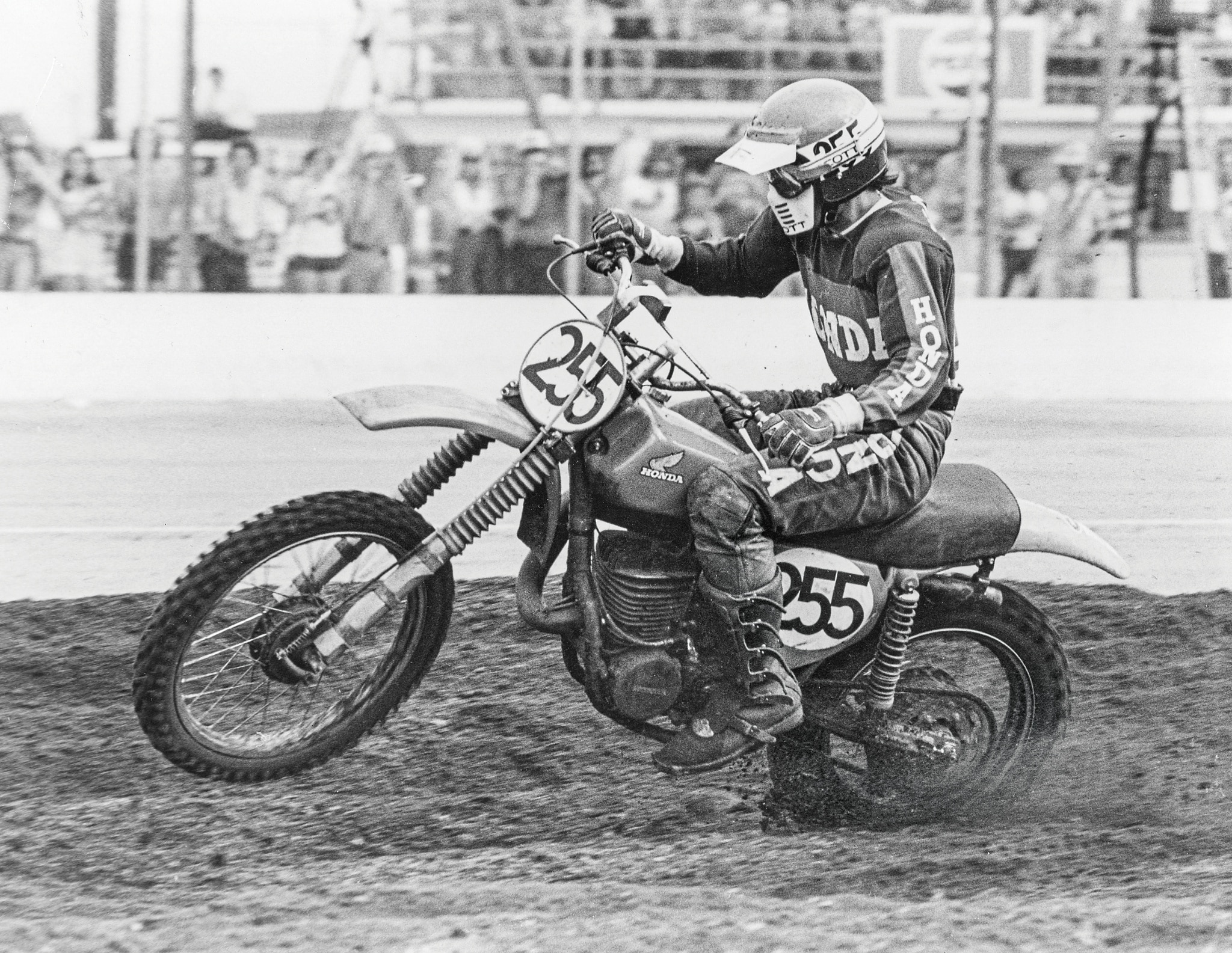
DIDN’T YOU MAKE A LAST ATTEMPT AS A PRO? I raced the 1979 Florida Winter AMA series on a stock YZ250 and, in fact, I beat Broc Glover at Coco Beach in one of the motos. After that, the guy who owned the Honda/Suzuki shop in Fort Lauderdale said, “I will sponsor you.” I went from the YZ250 Monoshock to a CR250 Red Rocket with two shocks on the back. That thing bucked me, and I put my right leg out and I heard it pop. I always vowed that if I hurt my right knee, I was going to stop racing, and there it was. My right knee did eventually get better, but I knew my racing time was coming to an end.
WHAT CAME NEXT? The guy that owned the Honda shop gave me a job in the shop. When the shop built a Honda XR500 four-stroke for the Alligator Enduro, I jumped on that XR500 and loved it. That is when I fell in love with four-stroke dirt bikes, and that is how I met my wife. The manager of the Honda shop became my future brother-in-law. He was married to my future wife’s sister.
WAS IT DIFFICULT TO RETIRE FROM PRO RACING? I had raced nine different brands and won on nine different brands. Like a lot of athletes, when it is all over with, you are lost. I got into drinking, partying, drugs and chasing women. The saving grace was that my future wife’s family were born-again Christians. They had a wonderful presence about them. I asked, “Why are you guys so happy?”
They replied, “Jesus is in our hearts.” I fought it at first, as that is how the devil is. He tricks you into thinking you don’t need Jesus. Finally, one day I prayed the sinner’s prayer and my life changed.
I stopped drinking, partying, drugs and chasing women. I started going to church and started seriously dating my future wife. We raised a family and started a business. I have two daughters and five grandkids. God has blessed me so much. I owe everything to God and Jesus. About two years ago, I got a Suzuki DR-Z400 and I love it. We also have a Honda 1800 that the wife and I go riding on.


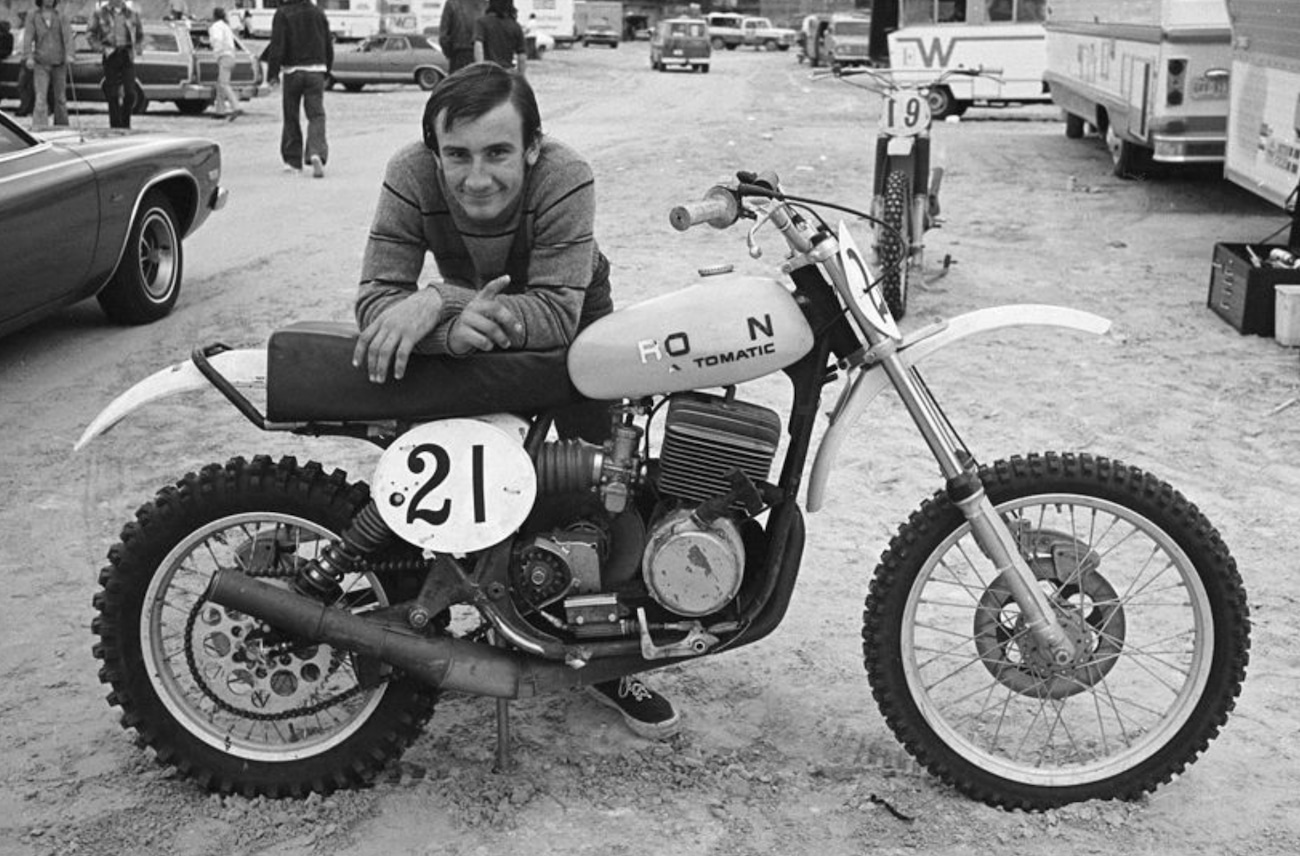
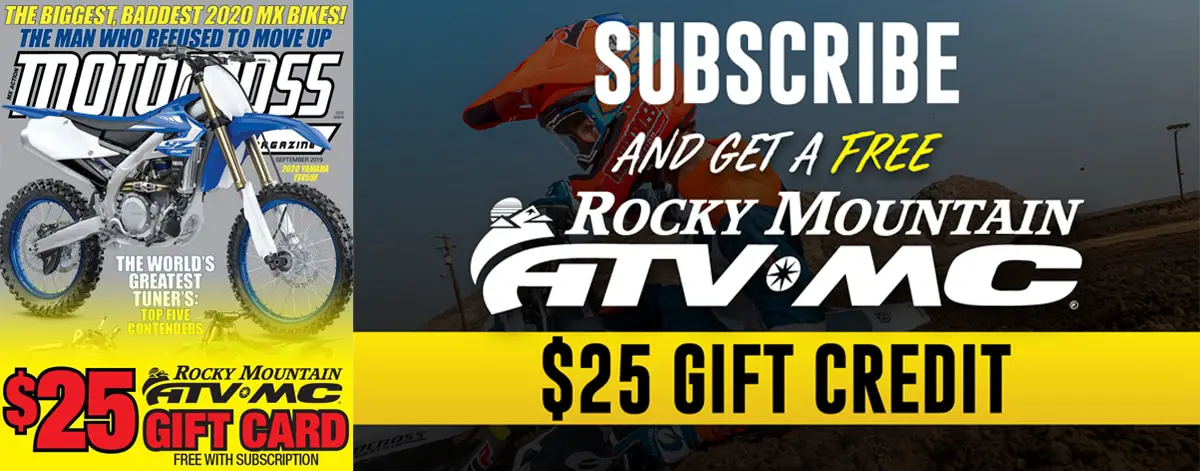



Comments are closed.